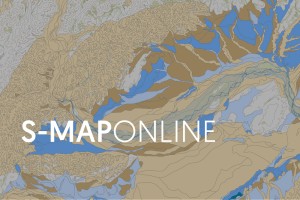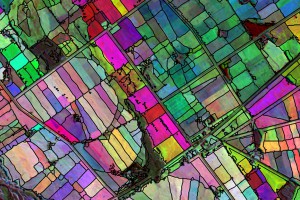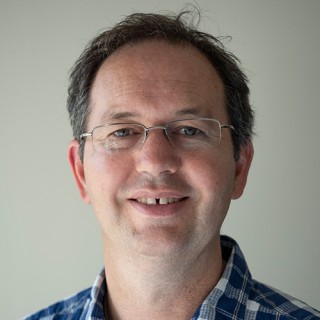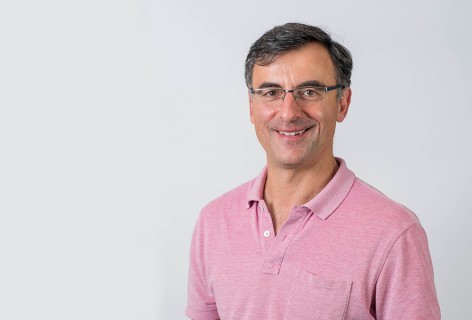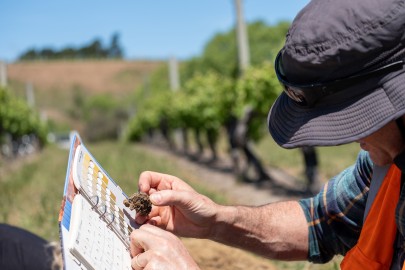
Matt Oliver from Marlborough District Council identifies soil colour during soil sampling in the Blind River area, south of Seddon.
For the team of pedologists who cross Aotearoa New Zealand (AoNZ) sampling the country’s soil, unflattering camera angles are part of the job. Soil sampling is hot, dirty work and involves hours and hours of hard physical labour.
Over 2 weeks, Kirstin and her colleagues will dig between six and eight pits a day, sampling at different depths down the metre-deep holes.
The soil profile needs to be graded for a suite of characteristics, describing differences such as colour, structure, and stoniness, with a final muddying of the hands to confirm the texture.
Samples are then packaged up and sent to the lab where they get tested for chemical and physical attributes, depending on the questions being asked. A large focus of our current sampling effort is supporting the establishment of the national soil carbon monitoring network, and increasing coverage in our national soil survey programme, S-map.
S-map now boasts information on an incredible 10 million hectares of farmable land. Manaaki Whenua science portfolio leader Dr Sam Carrick says 68% of AoNZ farmable land area, the land that has the potential for multiple types of use has now had its soils mapped.
S-map is more than a soil map: it’s a soil information system, with a comprehensive database and modelling research platform delivering data and information across several platforms and tools.
That’s important when AoNZ’s high pedodiversity (soil variation) is considered. Much of our regional identity, land use differences, and environmental challenges reflect how different soils have shaped our use of the land. Think of Northland’s very old clay soils, contrasting with the free-draining volcanic soils across the central North Island, to the highly leached soils on the rainfall-soaked South Island West Coast, and the stony glacial outwash soils across the Canterbury plains.
Manaaki Whenua researchers are working across a wide range of issues facing AoNZ, and at the heart of all of them is the soil. In this issue of Pūtaiao we highlight a range of research across our diversity of soils.
